2017 Chilean Wine Harvest Update
2017 Chilean Harvest:
2017 was a fantastic growing season up until the other day. As many of you might have heard on the news massive fires broke out in Chile. The fires have been a devastating blow to the Chilean people. However, The Curico Valley and the Southern regions of Colchagua Valleys were thankfully not affected. Unfortunately other Chilean wine growing regions such as the Maipo Valley were greatly affected by the fires and might not be able to produce vintages this year. We encourage everyone to donate to the Red Cross to aid in the relief of these fires.
The growing season for the Curico and Colchagua Valley’s was a hot and dry one. Expect wines with great character, intense flavors, complexity, and distinction. We should be receiving grapes around the same time as last year, maybe a little earlier for the whites. The first white grapes will be picked at the end of February. Carmenere will be in shorter supply this year as the demand has gone up for this grape, so put your orders in early!
The wines of Chile – along with the winemakers and vineyards that produce them – have had some profound transformations in the past 30 years. Grape growers have successfully determined which varietals thrive in their vineyards, have experimented with unique trellising systems, and explored interesting new areas for planting. The wines now have a head start because of the wonderful grape quality.
Musto Wine Grape Company, LLC. has been importing quality Chilean wine grapes for over 10 years. We have developed long lasting relationships in Chile and are constantly growing and developing the program. The vineyards are located between the Andes Mountains and Pacific Ocean. Therefore, the vines have excellent growing conditions for perfect ripeness and complexity thanks to the ocean breeze and Mediterranean climate.
The Curico Valley has been a wine grape growing region since the 1800’s and is located about 115 miles south of Santiago in the Central Zone of Chile. It is known as the “Heart of the Chilean wine industry”. Curico has the perfect fertile soil and is best known for its micro climates and the ability to grow over 30 different wine grape varieties. Situated along the Guaiquillo River and nestled between mountains on its east and west sides, Curico’s Mediterranean climate and unique topographical features helps to create some of the finest wine grapes in South America.
The climate in the valley is characterized by morning fog and wide day-night temperature fluctuations. Climatic conditions in some parts of the valley favor wines with higher acidity, such as white varieties including Chardonnay, Sauvignon Blanc, Vert and Gris. High quality Cabernet Sauvignon, Syrah, Merlot, and Carménère grapes are sourced from warmer areas of the valley, such as Lontué, particularly when produced from ancient vines.
Terroir: Sandy, clay, decomposed granite, volcanic-alluvial
Grape Varieties Available: Cabernet Sauvignon, Cabernet Franc, Carmenere, Malbec, Merlot, Petite Verdot, Pinot Noir, Syrah, Chardonnay, Pinot Gris, Sauvignon Blanc, Viognier
Juice Varieties Available: Cabernet Sauvignon, Cabernet Franc, Cabernet-Merlot Blend, Carmenere, Malbec, Merlot, Petite Verdot, Pinot Noir, Syrah, Chardonnay, Pinot Gris, Sauvignon Blanc, Viognier, Muscat
The Winemaker’s Think Tank: Vol 2 – What do I need to get started making wine with fresh juice?
The Winemaker’s Think Tank?
Every Thursday we will post about a few frequently asked questions that our winemaker has answered. If you have a winemaking question you would like to have answered, please email us at support@juicegrape.com and we will try to get into next week’s post. Cheers! 🙂
What do I need to get started making wine with fresh juice?
When elevating your winemaking to the next level, often sourcing the best ingredients is the most direct path to better results. After getting great base experience using wine kits, the next logical step to wine making greatness is fresh juice. When making this change from wine kits to fresh juice, other ingredients may be needed to ensure the juice will reach its greatest potential as wine. First, evaluate your juice for acid (pH) and sugar (Brix). What are the levels present in your juice? If the Brix level is below 20, you may consider adding sugar to increase the Brix levels to 24-26. What is the pH of the wine? Juice should have a pH greater than 3.1 to ensure a successful fermentation. If the pH is higher than 3.8, consider adding tartaric acid. This will ensure a better tasting wine after fermentation as well as a more stable wine.
The next area to consider is yeast. Certain strains of yeast will amplify certain traits within the finished product of wine such as fruit character, spice notes, or floral notes. The yeast has certain parameters that it will ferment best within, so consult a winemaking expert at Musto Wine Grape to help you select the best yeast strain for your wine. The yeast is the important catalyst that will process the grape juice into wine. The yeast will need certain nutrients to best assist it with its fermentation such as a rehydration nutrient like Go Ferm, and subsequent nutrients to finish out the fermentation process such as Fermaid O and Fermaid K. Musto Wine Grape stocks yeast along with all of the aforementioned nutrients in small packages, designed for the individual buckets of juice. This will give you perfectly measured amounts of products to add to your wine, making proper fermentation simple and with no wasted/unused product.
We hope this information helps with your winemaking. If you have any follow up questions or winemaking questions in general, please email us at support@juicegrape.com.
Wine Wednesday: South African Cabernet Sauvignon
As the Spring Wine Grape Harvest Approaches, we thought we would check out some of the wines that South Africa has to offer.
Today we tasted a Cabernet Sauvignon. #HappyWineWednesday
WINE: Bob’s 2013 Overnight Express South African Cabernet Sauvignon
TASTING NOTES: On the nose are notes of raspberry, berry, flint, and oak. The palate is filled with flavor, yet soft supple tannins round out the mouthfeel nicely. A great wine to enjoy with grilled meats or a meaty pasta dish.
VITUCULTURE: The soil where these grapes were grown is considered “Clovelly, Stony Glenrosa soils”. Clovelly is a component derived from granite, usually red to yellow colored. It contains acidic compounds. It is found on mountain foothill slopes and on ranges of hills, with good physical and water retention properties. Glenrosa soils are typically compact, stony, and clean cut.
WINE REGION: Western Cape, 31 miles East of Cape Town
GEEKY THINGS: Wines from the Western Cape are where some of our Cabernet Sauvignon will be arriving from. Wines from these locations are often described as having a subtle mineral note which many believe is from the decomposed granite soils. The Granite Mountains are approximately 600 million years old, over 3 times as old as the soil in Napa where many of the Cabernet Sauvignon vines are grown.
Click to Download Tasting Notes
More information about our South African Grapes are on our blog. Check out the most recent “2017 South Africa Harvest” by clicking HERE.
Cheers!
The Musto Wine Grape Staff
2017 South Africa Harvest
Spring season is almost upon us and we have some great news. This year we will not only be offering Pinotage from South Africa, but…
Wait for it…
Cabernet Sauvignon from South Africa too!!
Also, we have additional higher-end regions where we will be sourcing our South African grapes. In addition to the Breede River Valley we will also offer grapes from Stellenbosch, Olifantsriver, and the Cederberg Mountains.
Stellenbosch:
Location: Western Cape, 31 miles East of Cape Town
Grapes Being Sourced: Cabernet Sauvignon
Grower Information: A meticulous vineyard manager, this Cabernet has intense fruit flavors. The grapes create full, rich, complex wines that age well.
Geeky Facts: “Wines from these locations are often described as having a subtle mineral note which many believe is from the decomposed granite soils. The granite mountains are approximately 600 million years old, over 3 times as old as the soil in Napa where many of the Cabernet Sauvignon vines are grown.” (via Wine Folly)
Olifants River:
Location: One of the Northernmost wine regions in South Africa’s Western Cape. It spans 90 miles between Lutzville in the North and Citrusdal Valley in the South.
Grapes Being Sourced: Cabernet Sauvignon
Grower Information: The grapes thrive in the hot, dry mesoclimates and are tempered by cool ocean breezes at night and good cold units during winter. These growing conditions make the perfect recipe for good quality Cabernet Sauvignon. Also, you will find pockets of very old, almost ancient vines in this area. Vines were first planted in this area in the 1700’s
Geeky Facts: The Olifants River is named for the elephants that roamed the region in the 18th Century. (via Wine Searcher)
Cederberg Mountains:
Location: 186 miles North of Capetown. The Cederberg mountains contain a nature reserve. The mountain range is named after the endangered Clanwilliam cedar, which is a tree endemic to the area.
Grapes Being Sourced: Pinotage
Grower Information: These Pinotage grapes are from older vines and are cultivated at the highest altitude in South Africa. You can expect intense flavors with high levels of complexity. These grapes produce excellent Pinotage and can be compared to Napa and Sonoma in terms of quality.
Geeky Facts: The mountains are noted for dramatic rock formations and San rock.
The Pinotage grapes should be arriving towards the end of March and the Cabernet Sauvignon grapes should arrive at the end of April. We are expecting more information about crop estimates, clones, yeast pairings, photos, and more. So stay tuned for more updates! Cheers!
The Winemaker’s Think Tank: Vol 1- Why is My Wine Fizzy?
The Winemaker’s Think Tank?
Every Thursday we will post about a few frequently asked questions that our winemaker has answered. If you have a winemaking question you would like to have answered, please email us at support@juicegrape.com and we will try to get into next week’s post. Cheers! 🙂
Why is my wine fizzy?
Wine may be fizzy for one of two reasons: trapped gas within the wine leftover from fermentation, or a re-fermenting wine. Yeast exudes two substances upon fermentation: alcohol and carbon dioxide. Often times, carbon dioxide is exuded in such small bubbles that the weight of the liquid wine is too heavy to allow the gas to escape. This gas can easily be discharged through a process called degassing. Degassing involves the extreme agitation of the wine via stirring or pumping over. If you own a pump, you can set up the hoses in a circuit, and pump over vigorously to allow the gas to escape. You can also buy a degassing stirring wand that attaches to a cordless power drill. Simply attach it to the drill, place in the wine, and stir. The agitation will allow any trapped bubbles to rise to the surface and dissipate.
The wine may also be fizzy due to a re-fermentation. Even after racking, there may still be suspended yeast cells within the wine. The addition of potassium metabisulfite is necessary to ensure the killing off of remaining yeast cells, especially if the wine has any residual sugar or if the winemaker has plans to back sweeten the wine. Potassium sorbate is also strongly recommended if the winemaker intends upon back sweetening a white wine. The potassium sorbate will encapsulate the yeast cells, rendering them sterile and unable to ferment any sugar that is then added to the wine. (Note: Potassium sorbate cannot be used on any wine that has gone through Malolactic fermentation.) If the winemaker would prefer physical rather than chemical sterilization, a sterile grade (.45micron) filter may be used to physically remove any yeast or bacterial cells and prevent any further fermenting from occurring in the bottle.
*Please Note:
- Brettanomyces is carbon dioxide as well.
- The issue of filtration raises a host of issues. Sterile in winemaking is not achieved unless using an absolute filter (cartridge filter at the 0.45 or lower) and not a nominal filter (plate or pad filter such as the Grifo or SuperJets). The cartridges for the Enolomatic filter set-up are not rated as sterile either.
We hope this information helps with your winemaking. If you have any follow up questions or winemaking questions in general, please email us at support@juicegrape.com.






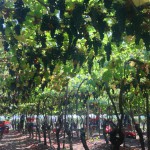
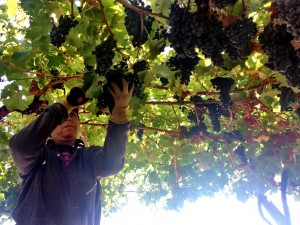
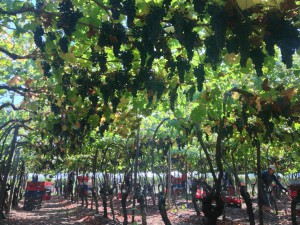
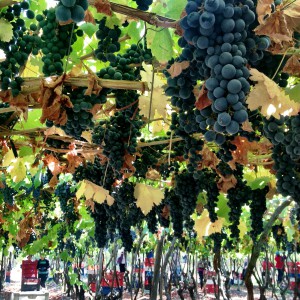


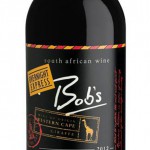
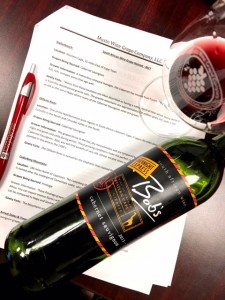
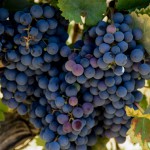
Recent Comments